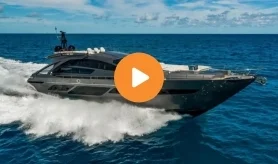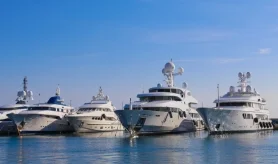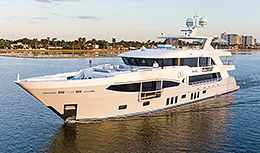- Alaskan Yachts
- Azimut Yachts
- Back Cove Yachts
- Beneteau Yachts
- Benetti Superyachts
- Bertram Yachts
- Boston Whaler
- Broward Yachts
- Buddy Davis Sportfish
- Burger Yachts
- Cabo Yachts
- Catamarans
- Carver Motoryachts
- Center Console
- Chris-Craft Yachts
- Cruisers Yachts
- DeFever Trawlers
- Dufour Sailboats
- Fairline Yachts
- Feadship Yachts
- Ferretti Yachts
- Formula Yachts
- Fountaine Pajot Cats
- Grady-White
- Grand Banks Trawlers
- Hargrave Yachts
- Hatteras Yachts
- Hinckley Picnic Boats
- Horizon Yachts
- Hydra-Sports
- Intrepid Boats
- Jarrett Bay Sportfish
- Jeanneau Yachts
- Kadey-Krogen Trawlers
- Lazzara Yachts
- Lekker Boats
- Luhrs Sportfish
- Marlow Yachts
- Maritimo Yachts
- Marquis Yachts
- Mazu Yachts
- McKinna Motoryachts
- Meridian Yachts
- Midnight Express
- MJM Yachts
- Mochi Craft
- Neptunus Motoryachts
- Nordhavn Trawlers
- Nordic Tugs
- Numarine Yachts
- Ocean Alexander Yachts
- Ocean King
- Offshore Yachts
- Outer Reef
- Oyster Sailing Yachts
- Pacific Mariner Yachts
- Palmer Johnson Yachts
Underwater Escape Pods
The market for personal submersibles is growing increasingly robust thanks to two major manufacturers.
This article was written by Kevin Koenig. Photography courtesy of Taj Howe & Nick Verola.
As boaters, all of us intuitively understand just how vast the ocean is. If you’ve ever done any offshore cruising of any type, and lost sight of land completely, you know just how infinitesimally small the sea can make one feel. But now remember this: those endless rolling blue waves are operating on a two-dimensional plane. Below your hull line lies another dimension—in every sense of the word.
The world’s oceans hold an estimated 352 quintillion gallons of water (that’s a number with 18 zeros after it). And nearly all of them, from the shallow seas from whence the Bahamas glean their name, down to the gulping black of the Mariana Trench, can now be explored, thanks to personal submersible technology.

Personal subs are nothing new. The first one was invented in 1620 by the Dutchman Cornelius Jacobzoon Drebbel. It was powered by oarsmen and reportedly could travel for three hours at a depth of 15 feet. These days, submersibles can dive just a tad deeper. Famously, in 2019, the adventurer Victor Vescovo took his sub DSV Limiting Factor to the bottom of the Mariana, which, at 35,853 feet deep, is the very bottom of the ocean—it’s deeper than Mt. Everest is tall by almost 7,000 feet.
Vescovo, who owns a 224-foot mega yacht/research vessel that he uses to launch and retrieve his sub, was part of the ultra-wealthy class of boat owners who first started buying personal subs as toys about ten years ago. What first started as an outlandish curio soon became de rigueur among a certain brand of yacht owner. Two companies in particular have dominated this newfound market, the Florida-based builder Triton Submarines, and Holland’s U-Boat Worx. Each brings a little something different to the potential owner.

Triton enjoys a marketing advantage over its competitor thanks in large part to Vescovo and the resultant publicity around his dives. Vescovo owns a Triton 36,000/2—capable of diving to 36,000 feet with two people aboard. The titanium-hulled vessel Vescovo used looks somewhat like a giant metal pocketbook and is for sale to the general public, but the far more popular models that Triton sells have clear acrylic bulbs that passengers sit inside. The smallest of these is a 660/2, with various other models available.
Triton also has the celebrity advantage over its competitor. Academy Award-winning filmmaker James Cameron used his Triton to visit the wreck of the Titanic, and recently announced that he, alongside another prominent Triton owner, the billionaire investor Ray Dalio, will be joining the Triton executive team.

Across the pond in the Netherlands, U-Boat Worx takes care to differentiate itself from Triton. Somewhat ironically, it does this by moving both up and down market. As the Dutch company watched submersibles become more and more popular on mega yachts, it realized that its products would soon become acceptable slightly down the mountain. Thus, it recently introduced the Nemo model, a 330/2-rated sub that is priced at a far more attainable pricepoint than other subs. Originally planned to be sold at about $1 million even, by the time Nemo made its debut at the 2022 Fort Lauderdale International Boat Show, it was closer to half that. Not only was the sub inexpensive in its own right, but in a huge departure for the industry, it no longer requires a mega yacht to launch and retrieve it. U-Boat Worx introduced a $60,000 track vehicle alongside it, that can roll down a beach right to the water’s edge and plop the little sub directly into the water. Suddenly, personal submersibles have gone from being the exclusive domain of the fabulously wealthy, to something that a successful accountant could buy.

Of course, the billionaires will now need a new toy, and U-Boat Worx is all too happy to fill that void as well. At the 2022 Monaco Yacht Show, the builder unveiled designs for something truly fantastical—an underwater mega yacht. The 123-foot Nautilus, named after the submarine in Jules Verne’s 20,000 Leagues Under the Sea, has all the trappings of a superyacht. There’s the luxuriously appointed staterooms, a custom tender, and a topdeck with a pool and wetbar. But if this yacht doesn’t want any ogling dockside eyes, it can simply disappear. The Nautilus can dive to 656 feet deep using hybrid diesel-electric propulsion units. “People that have decided to buy a yacht will now have to consider if their vessel of choice can also dive down to 200 meters,” U-Boat Worx chairman and founder Bert Houtman said in a statement.

Regardless of how big or small a sub may be, for novices, the prospect of slipping beneath the surface on one of these vessels can be daunting. One common concern on the smaller subs is claustrophia. The spaces are, in fact, cramped, almost like a fighter jet cockpit. But the builders report a more unexpected affliction to be more common—a twisted form of agoraphobia, or fear of open spaces. Because of the way underwater light refracts through the acrylic, the material looks like it has disappeared, and occasionally passengers feel like they might fall out of the sub. It happens, but it’s rare. Another common fear is that the sub might sink, but that’s nearly impossible, because the subs are positively buoyant. So, in the unlikely event of a major propulsion malfunction, the fully pressurized capsule simply bobs back to the service. Regardless, the subs are replete with redundancies and safety protocols that make them one of the safest forms of travel in the world.
So breathe easy, and take a dive down into the deep that requires no breath holding at all.

Request a Copy
Special Thanks to Our Sponsors








